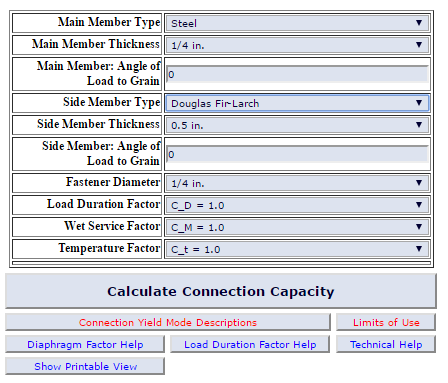Bottom Line up Front: How does one calculate the capacity of the bolt-wood interface for bolts going through a knife plate?
Background: An owner wants to connect a 10" post to the concrete footer using a knife plate. I have about 7500 lb (LFRD) uplift I need to chase through this connection. How do I go about sizing the bolts and the connection types? I just realized I only know the NDS Connection Tables (Table 12A - S). Using an internal knife plate and through bolts isn't one of the options in there (unless I am missing something).
Thank you all in advance.
Background: An owner wants to connect a 10" post to the concrete footer using a knife plate. I have about 7500 lb (LFRD) uplift I need to chase through this connection. How do I go about sizing the bolts and the connection types? I just realized I only know the NDS Connection Tables (Table 12A - S). Using an internal knife plate and through bolts isn't one of the options in there (unless I am missing something).
Thank you all in advance.

